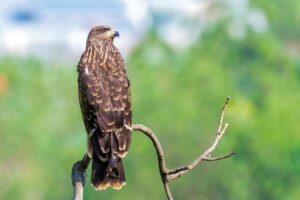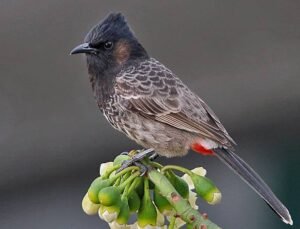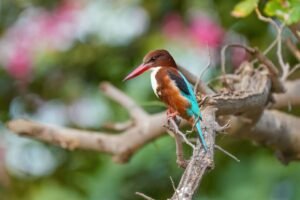King Cobra Secrets: Study Breaks 180-Year Myth
The King Cobra, renowned as the world’s most venomous snake, has long been an object of fascination for herpetologists and snake enthusiasts worldwide. However, recent groundbreaking research has shattered the long-standing notion that the King Cobra is a single species. A study led by researchers from the Kalinga Center for Rainforest Ecology, located in Agumbe, Karnataka, India, has unveiled startling revelations that not only expand our understanding of this formidable reptile but also challenge 180 years of established scientific thought. According to their findings, the King Cobra is not one species, but rather four distinct species, each with its own unique traits, habitats, and genetic composition.

The Study: A Deep Dive into the King Cobra’s Diversity
This comprehensive research, which spanned over a period of 12 years (2012-2024), primarily focused on examining the physical characteristics and genetic makeup of King Cobras from various regions. The research team, led by Dr. P. Gowri Shankar, analyzed the snake’s morphology, behavior, and genetic differences, ultimately identifying four genetically distinct species. These discoveries have profound implications for how we classify and study the King Cobra, offering insights into its evolution and ecological adaptations.
The Four Newly Identified King Cobra Species
The newly identified species of King Cobra reveal significant diversity in terms of geographical distribution, physical features, and behavioral patterns. These species have evolved to adapt to their respective environments, showcasing a remarkable level of variation that has previously gone unnoticed.
1. Ophiophagus Kaalinga (Western Ghats King Cobra)
One of the newly identified species, Ophiophagus kaalinga, is found in the Western Ghats of southwestern India. This King Cobra species is characterized by a distinctive pattern with fewer than 40 dorsal scales, setting it apart from other King Cobra species. The color and markings of the Ophiophagus kaalinga also vary significantly, displaying a unique combination of hues and textures. This species thrives in the humid, dense rainforests of the Western Ghats, a biodiversity hotspot in India.
2. Ophiophagus Hannah (Traditional King Cobra)
Ophiophagus hannah, often regarded as the classic King Cobra, is distributed across a broad geographical range, including Northern and Eastern India, the Andaman Islands, Pakistan’s eastern regions, Indo-Burma, Indo-China, and Thailand. Historically, this species has been the most widely recognized form of the King Cobra, with more than 50-70 dorsal scales on its body. While Ophiophagus hannah was once thought to be the only species of King Cobra, this study revealed its distinct genetic markers, confirming its status as a separate species with unique ecological characteristics.
3. Ophiophagus Bungarus (Malay Peninsula King Cobra)
The species Ophiophagus bungarus inhabits the Malay Peninsula, the Greater Sunda Islands, and the southern Philippines. This species exhibits a remarkable difference in scale count, with more than 70 dorsal scales. The Ophiophagus bungarus King Cobra is distinguished by its distinct morphology, particularly in terms of its body structure, which differs in size and pattern compared to other King Cobra species. This species’ diverse physical attributes underscore the evolutionary adaptability of the King Cobra across different Southeast Asian environments.
4. Ophiophagus Salvatana (Philippine King Cobra)
Found in the northern regions of Luzon Island in the Philippines, the Ophiophagus salvatana is the most striking of the four species. Unlike its relatives, this species of King Cobra lacks the usual dorsal scales and is uniform in color, offering a dramatic departure from the typical King Cobra’s appearance. Its distinct coloration and lack of patterns make it easily identifiable, setting it apart from all other King Cobra species. This evolutionary adaptation could be related to the unique environmental pressures of the Philippine archipelago.
Ecological and Behavioral Implications of the Study
The discovery of four distinct King Cobra species has profound implications for our understanding of their ecology and behavior. The King Cobra is primarily found in tropical rainforests and dense jungles, where it hunts a variety of prey, including other snakes. Its dietary habits and hunting behaviors vary across species, with some species focusing more on venomous snakes while others may target a wider array of animals. Understanding these differences helps explain how the King Cobra has adapted to diverse ecosystems over time.
Furthermore, these discoveries highlight the importance of habitat preservation for the survival of these species. The differing needs of each species in terms of habitat type, diet, and reproductive behavior suggest that each King Cobra species is uniquely suited to its environment. Conservation efforts will need to be tailored to address the specific threats facing each species, from habitat destruction to human-wildlife conflict.
King Cobra Venom: A Deadly Weapon with Medicinal Potential
While the King Cobra is feared for its highly toxic venom, which is classified as neurotoxic, its venom also holds great promise for medical research. The neurotoxic properties of the venom can affect the nervous system, leading to paralysis or death in its prey. However, this same venom is being studied for its potential in treating neurological disorders and other conditions involving the nervous system. Ongoing research into King Cobra venom could lead to breakthroughs in pain management, stroke recovery, and neurological rehabilitation.
Conservation Efforts: Protecting the King Cobra from Extinction
Despite being one of the most venomous snakes in the world, the King Cobra is protected under the Wildlife Protection Act and is classified as a protected species in many parts of its range. However, the King Cobra faces numerous threats, including deforestation, poaching, and human-wildlife conflict, which have led to declining populations in certain areas. Efforts to protect the King Cobra’s natural habitat are crucial to ensuring the survival of these remarkable reptiles for future generations.
Conclusion: A New Era of King Cobra Research and Conservation
The findings of this study mark a pivotal moment in the study of the King Cobra, offering new insights into its evolutionary history, genetic diversity, and ecological role. With the identification of four distinct species, researchers now have a clearer understanding of the King Cobra’s evolutionary path and its complex interactions with the environment. As conservation efforts continue to protect these fascinating creatures, it is essential to recognize the importance of preserving their habitats and understanding their diverse needs.
The study not only challenges centuries-old assumptions about the King Cobra but also emphasizes the need for tailored conservation strategies to safeguard each species. As we delve deeper into the mysteries of the King Cobra, we are reminded of the rich biodiversity that still exists in the natural world, waiting to be discovered.
Frequently Asked Questions (FAQ) about the King Cobra
1. What is the King Cobra?
The King Cobra (Ophiophagus hannah) is a venomous snake species and is recognized as the longest venomous snake in the world. Known for its distinct hood and lethal neurotoxic venom, it is native to the forests of South and Southeast Asia.
2. How many species of King Cobra are there?
Recent research has revealed that the King Cobra is not a single species but consists of four distinct species, each showing unique physical and genetic traits. These species are:
- Ophiophagus kaalinga: Found in the Western Ghats of India.
- Ophiophagus hannah: The most common form, found in India, Southeast Asia, and parts of Indo-China.
- Ophiophagus bungarus: Found in the Malay Peninsula and the Philippines.
- Ophiophagus salvatana: A unique species found in the northern parts of the Philippines.
3. Where do King Cobras live?
King Cobras primarily inhabit dense forests, rainforests, and hilly terrains. They are also found in woodlands, mangrove swamps, and bamboo thickets. They are highly adaptable and can live at altitudes ranging from sea level to 2,000 meters.
4. What does the King Cobra eat?
King Cobras are primarily carnivorous and feed mainly on other snakes, including both venomous and non-venomous species. They are known to hunt larger prey like lizards and small mammals. Their diet mainly consists of reptiles, but they will also consume birds and amphibians when available.
5. How dangerous is a King Cobra’s venom?
The venom of the King Cobra is highly neurotoxic, affecting the nervous system by causing paralysis. A single bite can deliver enough venom to kill an elephant. While fatalities in humans are rare due to the rapid medical treatment available, the venom can lead to respiratory failure and, if untreated, can be fatal.
6. What are the physical characteristics of the King Cobra?
King Cobras are characterized by their long bodies, which can grow up to 18 feet, making them the longest venomous snake. They have a distinctive hood, which is expanded when they feel threatened. Their color varies, but they are usually olive, brown, or green with faint crossbands. Their eyes are large, and they have a relatively slender build.
7. How do King Cobras reproduce?
King Cobras are oviparous, meaning they lay eggs. The female lays about 20 to 40 eggs, which are incubated for 60 to 80 days. During incubation, the female stays near the eggs to protect them from predators. Once the eggs hatch, the young King Cobras are independent and can immediately hunt on their own.
8. Are King Cobras aggressive?
King Cobras are generally not aggressive unless provoked. They are more likely to retreat from humans than engage in confrontation. However, if they feel threatened or cornered, they will defend themselves aggressively. They are known for their ability to strike at great distances, which makes them especially dangerous.
9. How can King Cobra bites be treated?
Treatment for a King Cobra bite typically involves administering antivenom and providing supportive care. Immediate medical attention is crucial as the neurotoxic venom can lead to paralysis and respiratory failure. Antivenom specific to the species of King Cobra is required for effective treatment.
10. What role do King Cobras play in the ecosystem?
King Cobras play an important role as apex predators in their ecosystem. By controlling populations of smaller reptiles, particularly snakes, they help maintain a balance within the food chain. This predatory behavior also helps to regulate the number of venomous snake species in their habitat.
11. How do King Cobras defend themselves?
When threatened, King Cobras display a number of defensive behaviors, including raising their body and hooding, making them appear larger and more intimidating. They may hiss loudly and, if further provoked, will strike with incredible speed and accuracy.
12. Are King Cobras endangered?
While King Cobras are not currently listed as critically endangered, their population is threatened by habitat loss, human-wildlife conflict, and illegal hunting for their skin and venom. Conservation efforts are underway, but their numbers continue to decline in certain areas due to deforestation and human encroachment into their natural habitats.
13. What are the major threats to King Cobras?
King Cobras face numerous threats including habitat destruction, poaching, and human-induced environmental changes. The expansion of agricultural activities, deforestation, and urbanization have significantly reduced their habitat. Additionally, King Cobras are often killed by humans due to fear, leading to further population decline.
14. How can King Cobras be protected?
Protection of King Cobras requires a multifaceted approach including the preservation of their natural habitats, reducing human-wildlife conflict, and educating local communities about their ecological importance. Legal protection under wildlife conservation laws, as well as creating safe corridors for these snakes to travel, is essential for their survival.
15. Can King Cobras live in captivity?
King Cobras can be kept in captivity under specific conditions, such as in zoos or wildlife sanctuaries, where their environmental needs can be met. However, due to their size, venomous nature, and dietary requirements, they are not suitable as pets. It is essential that they be cared for by experienced handlers with proper facilities.
16. What is the lifespan of a King Cobra?
King Cobras can live up to 20 years in the wild, though their lifespan can be shorter in captivity due to the stress of confinement and inadequate care. The average lifespan of a King Cobra in the wild is typically around 15 years.
17. How can I identify a King Cobra from other snakes?
King Cobras are easily identified by their large size, long body, and the distinct hood they can expand when threatened. They have a relatively smooth, shiny appearance and their skin coloration varies from olive to dark brown with pale crossbands. Their head is distinctively large and triangular, which further distinguishes them from non-venomous snakes.
18. Are there any myths about King Cobras?
There are numerous myths surrounding King Cobras, especially concerning their behavior and venom. One common myth is that King Cobras will always strike at humans on sight. In reality, they prefer to avoid human contact and will typically only strike when threatened. Another myth is that King Cobra venom is always fatal, but with prompt medical intervention, the chances of survival are significantly increased.
Related Posts
| Post Title | Link |
|---|---|
| What Are Reptiles? | What Are Reptiles? |
| Cobra Snake – All Information | Cobra Snake – All Information |
| King Cobra – All Information | King Cobra – All Information |
| Russell’s Viper | Russell’s Viper |
| Common Krait – All Information | Common Krait – All Information |
| Banded Krait Snake – All Information | Banded Krait Snake – All Information |
| Saw-Scaled Viper Snake – All Information | Saw-Scaled Viper Snake – All Information |
| The Big Four Snakes of India | The Big Four Snakes of India |
| Common Cat Snake – All Information | Common Cat Snake – All Information |
| The Green Vine Snake – An In-Depth Look | The Green Vine Snake – An In-Depth Look |


